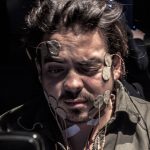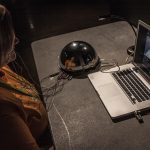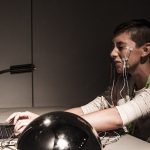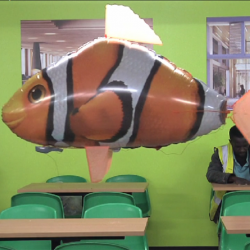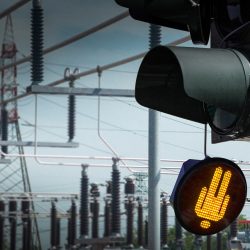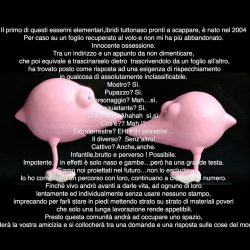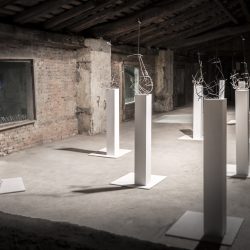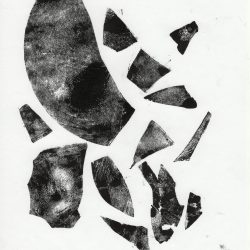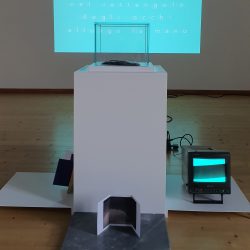work
TRANSICONMORPHOSIS
| category | Performance |
| subject | Political / Social |
| tags | tecnologia, comunicazione, futuro |
| hours | 24 |
| minutes | 0 |
| seconds | 0 |
| year | 2013 |
TRANSICONMORPHOSIS, 2013. Mixed media installation and performance. Variable dimensions. Edition of 1.
TRANSICONMORPHOSIS is an interactive artwork developed in collaboration with Fito Segrera that proposes an ambiguous and experimental communication system for the near future, the result of a theoretical reflection on the development of new forms of technological communication, their effects on human beings, as well as their political effects. In TRANSICONMORPHOSIS, a conventional chat service hosted on a computer is interfaced with a series of electrodes connected to the face of the artist; on the other side of the exhibition space another computer allows a member of the audience to chat with the artist. The system focuses on facial expressions, and translates the emoticon received through the chat into electrical impulses that force the artist’s facial features to mimic the expression of each emoticon.
If in the future the possibility of face-to-face communication becomes less widely used and written communication becomes crystallized in a series of immutable forms, humans will lose the empathic abilities that today are, in part, reproduced by emoji and emoticons. If humanity fails to invent new metamorphoses, and new emoji, these devices will be diffused worldwide.
TRANSICONMORPHOSIS is an interactive artwork developed in collaboration with Fito Segrera that proposes an ambiguous and experimental communication system for the near future, the result of a theoretical reflection on the development of new forms of technological communication, their effects on human beings, as well as their political effects. In TRANSICONMORPHOSIS, a conventional chat service hosted on a computer is interfaced with a series of electrodes connected to the face of the artist; on the other side of the exhibition space another computer allows a member of the audience to chat with the artist. The system focuses on facial expressions, and translates the emoticon received through the chat into electrical impulses that force the artist’s facial features to mimic the expression of each emoticon.
If in the future the possibility of face-to-face communication becomes less widely used and written communication becomes crystallized in a series of immutable forms, humans will lose the empathic abilities that today are, in part, reproduced by emoji and emoticons. If humanity fails to invent new metamorphoses, and new emoji, these devices will be diffused worldwide.




